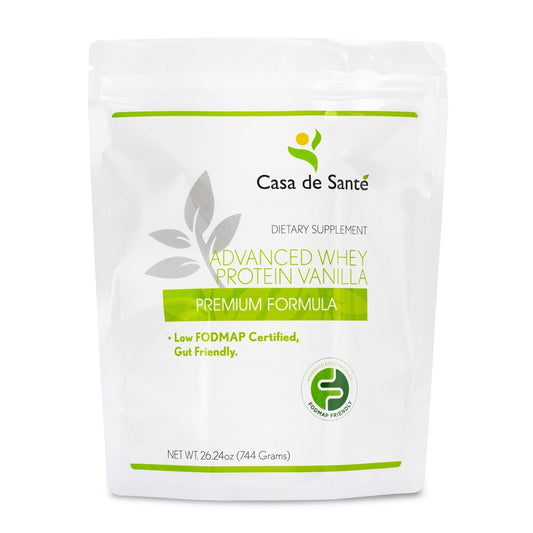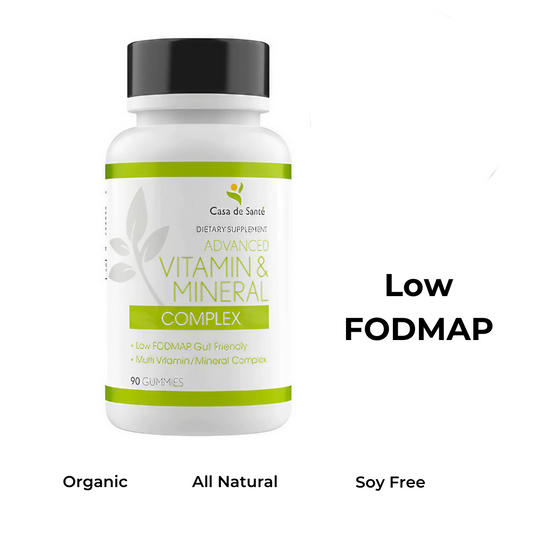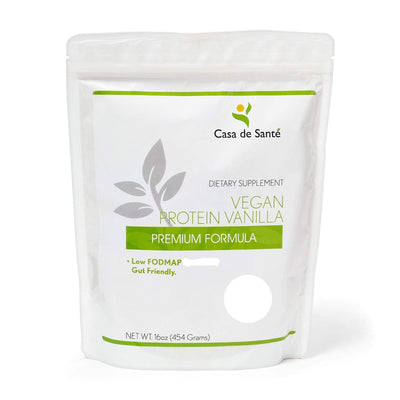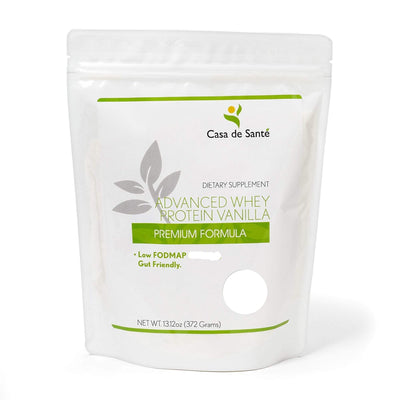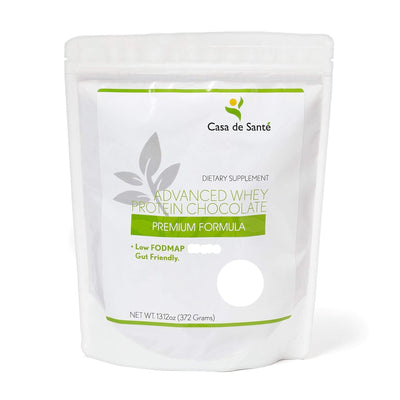Is Monkfish Low FODMAP
Is Monkfish Low FODMAP
Monkfish is a popular seafood option that is often enjoyed for its unique taste and texture. However, for individuals who follow a low FODMAP diet, it is important to consider whether monkfish is suitable for their dietary needs. In this article, we will explore the relationship between monkfish and FODMAPs, understand the nutritional profile of monkfish, and discuss alternative seafood options for those following a low FODMAP diet. Let's delve into the topic of monkfish and its compatibility with a low FODMAP diet.
Understanding FODMAP
Before we dive into the specifics of monkfish, it is crucial to have a clear understanding of FODMAPs. FODMAP stands for Fermentable Oligosaccharides, Disaccharides, Monosaccharides, and Polyols. These are a group of carbohydrates that are poorly absorbed in the small intestine, which can cause digestive symptoms in some individuals.
FODMAPs are found in a variety of foods, including fruits, vegetables, grains, and dairy products. They can trigger symptoms such as bloating, gas, abdominal pain, and diarrhea in individuals with irritable bowel syndrome (IBS) or other sensitivities. The low FODMAP diet is often recommended as a way to manage these symptoms and improve digestive health.
A low FODMAP diet can be highly beneficial for individuals with IBS or other digestive sensitivities. By reducing the consumption of high FODMAP foods, it is possible to alleviate or even eliminate troublesome symptoms. However, it is essential to note that a low FODMAP diet should be followed under the guidance of a healthcare professional or registered dietitian to ensure nutritional adequacy.
When following a low FODMAP diet, it is important to understand which foods are high in FODMAPs and should be avoided or limited. Some examples of high FODMAP foods include:
- Apples
- Pears
- Watermelon
- Onions
- Garlic
- Wheat
- Rye
- Milk
- Yogurt
These are just a few examples, and there are many more foods that contain FODMAPs. It is important to work with a healthcare professional or registered dietitian to create a personalized low FODMAP meal plan that meets your nutritional needs while avoiding trigger foods.
In addition to avoiding high FODMAP foods, it is also important to pay attention to portion sizes. Some foods that are low in FODMAPs may still cause symptoms if consumed in large quantities. It is recommended to start with small portions and gradually increase as tolerated.
While following a low FODMAP diet, it is important to ensure that you are still getting all the necessary nutrients for optimal health. This can be achieved by incorporating a variety of low FODMAP foods such as:
- Spinach
- Kale
- Carrots
- Quinoa
- Gluten-free oats
- Lactose-free milk
- Almond milk
- Chicken
- Salmon
These are just a few examples of low FODMAP foods that can be included in a well-balanced diet. It is important to work with a healthcare professional or registered dietitian to ensure that you are meeting your nutritional needs while following a low FODMAP diet.
In conclusion, understanding FODMAPs and following a low FODMAP diet can be highly beneficial for individuals with IBS or other digestive sensitivities. By avoiding high FODMAP foods and paying attention to portion sizes, it is possible to alleviate or even eliminate troublesome symptoms. However, it is important to seek guidance from a healthcare professional or registered dietitian to ensure nutritional adequacy while following a low FODMAP diet.
The Nutritional Profile of Monkfish
When considering whether monkfish is low FODMAP, it is essential to understand its nutritional composition. Monkfish is a lean source of protein, making it an excellent option for individuals who wish to incorporate more protein into their diet. Additionally, monkfish is low in fat and carbohydrates, which can be favorable for those following a low FODMAP diet.
Monkfish, also known as "the poor man's lobster," is a versatile and delicious fish that offers numerous health benefits. Let's dive deeper into the nutritional facts and health benefits of monkfish.
Basic Nutritional Facts
A 3-ounce (85-gram) serving of monkfish typically contains around 76 calories, 16 grams of protein, less than 1 gram of fat, and 1 gram of carbohydrates. Protein is essential for muscle growth and repair, while the low fat and carbohydrate content of monkfish can help individuals meet their dietary goals without exacerbating digestive symptoms.
Monkfish is not only low in calories but also packed with essential nutrients that support overall health and well-being. It is an excellent choice for individuals looking to maintain a healthy weight or manage their caloric intake.
Health Benefits of Monkfish
Furthermore, monkfish is a good source of essential nutrients such as vitamin B12, selenium, and potassium. Vitamin B12 is vital for energy production, nerve function, and the production of red blood cells. It plays a crucial role in maintaining a healthy nervous system and preventing anemia.
Selenium, an essential trace mineral found in monkfish, acts as an antioxidant and supports thyroid function. It helps protect the body against oxidative stress and plays a role in immune function.
Potassium, another essential mineral abundant in monkfish, plays a crucial role in maintaining healthy blood pressure and fluid balance. It supports proper muscle and nerve function and helps regulate heart rhythm.
Incorporating monkfish into a low FODMAP diet can contribute to a well-rounded and nutritious meal plan. Its nutrient profile makes it an excellent choice for individuals with specific dietary needs, such as those following a low FODMAP diet or looking to increase their protein intake while keeping fat and carbohydrates in check.
When preparing monkfish, it is important to note that it can be cooked in various ways, including grilling, baking, or pan-searing. Its firm texture and mild flavor make it a versatile ingredient that can be used in a wide range of dishes, from soups and stews to stir-fries and kebabs.
So, whether you're a seafood lover or looking to diversify your protein sources, monkfish is a nutritious and delicious option to consider. Its low calorie, high protein, and nutrient-rich composition make it a valuable addition to a balanced diet.
Monkfish and FODMAP
Now, let's address the question at hand - is monkfish low in FODMAP? While there is limited research specifically on monkfish and its FODMAP content, the general consensus is that monkfish is considered low in FODMAPs. This makes it a suitable seafood option for individuals following a low FODMAP diet.
Is Monkfish Low in FODMAP?
Monkfish is naturally low in FODMAPs, primarily consisting of protein and minimal carbohydrates. However, it is crucial to note that food sensitivity can vary from person to person. It is recommended to introduce monkfish gradually into your low FODMAP diet, paying attention to any potential digestive symptoms. If tolerated well, monkfish can be enjoyed as part of a balanced low FODMAP meal plan.
How to Prepare Monkfish for a Low FODMAP Diet
When including monkfish in your low FODMAP recipes, it is important to consider the seasonings and ingredients used in the preparation. Keep in mind that certain flavor enhancers, such as garlic or onion, may contain FODMAPs and should be avoided or replaced with suitable alternatives. Utilizing low FODMAP herbs, spices, and marinades can help enhance the taste of monkfish dishes while maintaining a FODMAP-friendly profile.
Monkfish, also known as "the poor man's lobster," is a versatile and delicious seafood option that can be enjoyed by individuals following a low FODMAP diet. With its firm and meaty texture, monkfish is often compared to lobster or scallops in terms of taste and appearance. This makes it an excellent choice for those looking to add variety to their low FODMAP meal plans.
Not only is monkfish low in FODMAPs, but it is also a good source of lean protein. Protein is an essential macronutrient that plays a crucial role in building and repairing tissues, supporting the immune system, and maintaining overall health. Incorporating monkfish into your low FODMAP diet can help ensure that you are meeting your protein needs while avoiding high FODMAP foods.
When it comes to preparing monkfish for a low FODMAP diet, there are numerous delicious options to choose from. Grilling, baking, or pan-searing monkfish are all excellent cooking methods that can help enhance its natural flavors. Pairing monkfish with low FODMAP vegetables, such as zucchini, bell peppers, or spinach, can create a well-rounded and nutritious meal.
For those who enjoy bold flavors, experimenting with low FODMAP marinades and sauces can take your monkfish dishes to the next level. Consider using a combination of low FODMAP herbs and spices, such as basil, oregano, paprika, or cumin, to create a flavorful marinade. Alternatively, a simple lemon and herb butter sauce can add a touch of richness and tanginess to your monkfish.
It's important to note that while monkfish itself is low in FODMAPs, the way it is prepared and served can impact its FODMAP content. For example, if you choose to bread or batter the monkfish, the coating may contain high FODMAP ingredients such as wheat or garlic powder. Opting for gluten-free breadcrumbs or using a low FODMAP alternative can help keep your monkfish dish FODMAP-friendly.
Overall, monkfish is a fantastic seafood option for individuals following a low FODMAP diet. Its low FODMAP content, combined with its versatility and delicious taste, make it a great choice for those looking to expand their low FODMAP meal options. So go ahead and indulge in a mouthwatering monkfish dish that will leave your taste buds satisfied and your stomach happy!
Other Seafood Options for Low FODMAP Diets
In addition to monkfish, there are several other seafood options that are compatible with a low FODMAP diet. It is essential to diversify your diet to ensure a wide range of nutrients and flavors. Let's explore some seafood choices that can be enjoyed while following a low FODMAP eating plan.
Seafood to Include in a Low FODMAP Diet
Safe seafood options for a low FODMAP diet include salmon, shrimp, tuna, cod, and mussels. These seafood varieties are known to have low FODMAP content and can be incorporated into various delicious dishes. Experiment with different cooking methods and flavors to make your low FODMAP seafood meals exciting and enjoyable.
Seafood to Avoid on a Low FODMAP Diet
While there are plenty of seafood choices that are suitable for a low FODMAP diet, it is essential to be cautious of certain seafood items that may contain FODMAPs. High FODMAP seafood options to avoid or consume in moderation include scallops, clams, oysters, and anchovies. Due to their higher FODMAP content, these seafood choices may trigger digestive symptoms in sensitive individuals.
Tips for Maintaining a Low FODMAP Diet
Transitioning to a low FODMAP diet can be challenging at first, but with the right guidance and planning, it can become a manageable and beneficial dietary approach. Here are some practical tips to help you maintain a low FODMAP diet successfully.
Shopping Tips for a Low FODMAP Diet
Make a habit of reading food labels to identify potential FODMAP sources, as FODMAPs can be found in a wide range of processed foods. Opt for fresh, whole foods whenever possible and select low FODMAP alternatives for your favorite ingredients, such as garlic-infused oil instead of fresh garlic.
Cooking Tips for a Low FODMAP Diet
Experiment with low FODMAP herbs, spices, and condiments to enhance the flavor of your meals. Additionally, consider cooking methods that maximize the taste and texture of your low FODMAP ingredients. Grilling, baking, or sautéing seafood can help highlight its natural flavors without the need for high FODMAP additives.
In conclusion, monkfish is generally considered to be low in FODMAPs, making it a suitable seafood option for individuals following a low FODMAP diet. With its lean protein content and nutritional benefits, monkfish can be incorporated into a well-rounded and nutritious meal plan. However, it is important to remember that individual tolerance may vary, and it is recommended to introduce new foods gradually and listen to your body's response. By diversifying your seafood choices and following the tips for maintaining a low FODMAP diet, you can enjoy a wide range of delicious and digestive-friendly meals.








